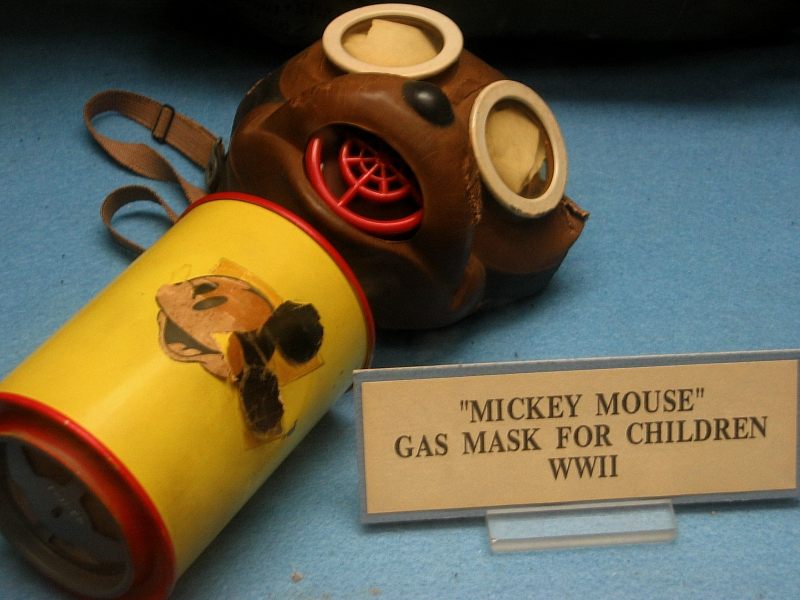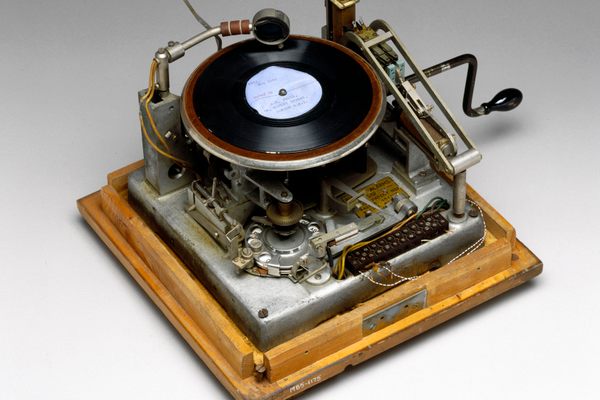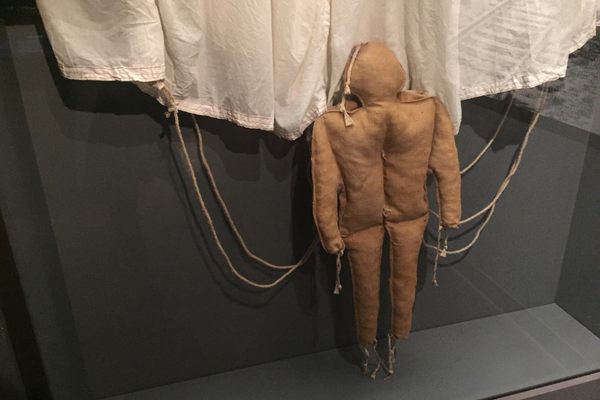When Mickey Mouse Was Used to Get Children to Wear Gas Masks
The use of chemical warfare during World War II made for creative solutions back on the homefront.

With the brutal potential of World War II for chemical warfare on American soil, an intriguing approach was taken to get children to wear their terrifying gas masks. With the approval of Walt Disney himself, the Mickey Mouse gas mask was imagined in 1942.
The small mask with its Mickey ears was meant to put children at ease in an emergency situation (although the masks of the adults around them would probably still be nightmarish). As Major Robert D. Walk of the US Army Reserve Command explained in an essay on the mask: “The mask was designed so children would carry it and wear it as part of a game. This would reduce the fear associated with wearing a gas mask and hopefully, improve their wear time and, hence, survivability.”
About 1,000 of them were made by the Sun Rubber Company, each with glass eyes staring out from the cartoonish face connected to an air filter. Since chemical warfare never made it to the United States in World War II, they weren’t used, but in England there was a British version that used bright red and blue colors to attract children. It was also called a “Mickey Mouse” gas mask, although had nothing to do with the character. Instead the name was supposed to be part of the “game” to get children to wear them.
Most of the American masks have totally disappeared, although a rare few remain in museums. One prototype is in the 45th Infantry Museum in Oklahoma City, which has other World War II oddities such as Hitler’s Berlin bunker mirror. Others can be found in the US Army Chemical Museum in Fort McClellan in Alabama, the Walt Disney Archives in Burbank, California, and the museum at Fort Leonard Wood in Missouri.




















Follow us on Twitter to get the latest on the world's hidden wonders.
Like us on Facebook to get the latest on the world's hidden wonders.
Follow us on Twitter Like us on Facebook